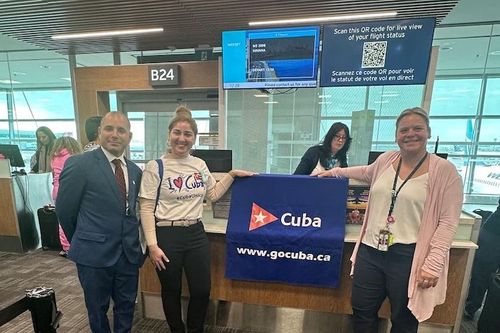Where travel agents earn, learn and save!
News / North American inbound tourism spend declined by 74.1% in 2020
GlobalData’s latest report found that total international arrivals to the region declined 67% year-on-year (Y-o-Y) in 2020 and inbound expenditure by 74.1%

Destinations across North America (USA, Mexico and Canada) are at different stages of tourism development. However, one common factor is that the effects of the COVID-19 pandemic in 2020 have been hard felt for each respective tourism economy, says GlobalData, a leading data and analytics company.
GlobalData’s latest report, ‘Tourism Destination Market Insight: North America (2021)’, found that total international arrivals to the region declined 67% year-on-year (Y-o-Y) in 2020 and inbound expenditure by 74.1%. North America’s forecast recovery follows the general global travel consensus that domestic tourism will recover first (2022), but international arrivals will not recover until 2024. Forecasts for inbound tourism expenditure, however, suggest this will not surpass pre-pandemic levels until after 2025.

Johanna Bonhill-Smith, Travel and Tourism Analyst at GlobalData, comments: “COVID-19 can still be identified as the greatest threat to growth within the travel sector, and in North America this is no different.
“The loss of inbound tourist spending in 2020 (-74.1%) to North America was significant. GlobalData’s forecast suggest this is not expected to fully recover until after 2025, and this will be one of the greatest factors affecting economic recovery for the region over the next few years.”
One of the major benefits of inbound tourism is spending, which can boost economic revenues, stimulate employment and act as a catalyst for infrastructure development. Each destination does hold a strong domestic tourism offering, but this cannot be relied upon alone to offset the collapse of international travel.
Bonhill-Smith continues: “Travel to North America from other destinations worldwide can be expensive. GlobalData’s survey* found that 23% of global respondents have reduced their household budgets in the past year and 27% have ‘somewhat’ reduced them. Reduced budgets mean less expenditure on recreation affecting the ability to travel. Budget constraints are going to be more important in purchasing travel experiences over the next few years, which could jeopardize North America’s tourism recovery in comparison to other regions worldwide.”
Due to proximity, connectivity and competing low-cost carrier (LCC) operators, travel between the US, Canada and Mexico can be relatively low-cost, spurring travel across the destinations. Intraregional travel will be vital in North America’s tourism recovery. Each destination already relies heavily on neighboring destinations as important sources for economic income.
Bonhill-Smith adds: “From vast natural landscapes including coastal areas, national parks and mountain ranges to bustling cities full of cultural landmarks, North America benefits from a strong tourism offering. Therefore, there is a wide range of pull factors that lures visitors worldwide for leisure and business. In addition to attractive destinations to visit, its sizable VFR (visiting friends and relatives) market is also a strong feature. Collaboration between destination marketing organizations (DMOs) and government bodies will be vital to ensure economic relief for the region going forward.”











